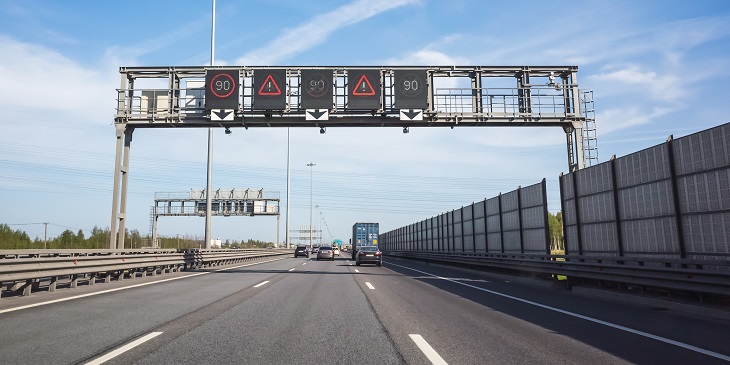Let’s talk about connected cars, foundation for e-mobility and autonomous driving, and a topic currently occupying all companies involved in mobility and navigation. It is becoming increasingly important to develop comprehensive solutions, approaches, and strategies for these domains. This undoubtedly includes an international Navigation Data Standard, because interoperable maps and data are essential foundations for successful navigation and communication.
Equally important are technological evolutions such as 5G, which has significant increased capacity and a lower latency (higher responsiveness) than previous networks. This is urgently needed in the advancing connected car development to create a seamless user experience, for example in driver assistance, navigation, and of course automated driving.
Connected cars already set the scene for connected services
A Deloitte study has found that the term “connected car” is still not very well established – more than half of drivers do not have a clear idea of what it means. A large number are not even aware that some of the functions in their vehicle are connected car services. That said, connected vehicles that are already embracing numerous services come into play, from infotainment till connected mobility. As vehicles become more connected, highly accurate destination guidance becomes feasible with out-of-the-box, freshly updated and scalable navigation solutions.

Tim Wouda, Senior Manager Automated Driving Solutions at HERE Technologies, comments: “We have already come a long way from the very first connectivity options through today’s over-the-air connectivity. And still mobile network operators are constantly improving network coverage and connectivity quality. This goes alongside the evolution of improved navigation reliability, security, and globally uniform standards such as NDS.”
Near real-time services such as traffic alerts or parking aids are already commonly integrated, and navigation must be synchronized with advanced driver assistance systems (ADAS). For example, drivers are to be alerted more and more instantly and accurately to dangers – such as hazards and accidents along the route.
Wouda explains: “To create reliable services it is recommended that vehicles know what the expected connectivity quality is for the planned route, e.g. if connectivity is essential for a critical service like automated driving, an alternative route may need to be proposed if that caters the connectivity quality better.”
Which is why HERE offers a data product that provides up-to-date information about the state of mobile networks on practically every stretch of road across 196 countries. HERE Cellular Signals reveals a snapshot of network coverage, carriers, signal strength and frequency bands for nearly any road segment.
Developments like 5G push emerging use cases like sensor data sharing even further towards real-time dynamic content exposure and enable increased levels of autonomous driving.
HD maps are the gamechanger, also for V2X
Example HD Live Maps: High-definition maps have already been on the market for a few years. The initial adoption has been slow as these are primarily introduced with higher levels of automated driving. These maps are essential for accurate localization and behavioural planning, and enable the automated vehicle to drive safely in context of its surroundings.
Wouda says: “One emerging development is the introduction of V2X communications that allows the vehicle to communicate with its surroundings such as other vehicles, road infrastructure, pedestrians, and bicycles. This increases the safety and efficiency on the road. It is essential the receivers of so-called Collective Perception Messages (CPM) to be location-aware. This means that such situational messages can be plotted properly in context to the right lane and road level, e.g. when crossing a bridge. The HD-map can provide the required context for such messages.”
Furthermore, positional accuracy will undoubtedly be one of the challenges in the automated driving environment in the near future. HD maps play a key role in enhancing GPS-location to achieve a precise localization that is needed for automated driving.
V2X messages typically expose location information, enabling its surroundings to react on it. However, if the accuracy-level of the received V2X message is unknown, it becomes unusable for most safety applications. Even though high-end cars are already quite well equipped, they should be aware if received information from their surroundings is not so precise. For that purpose, it is recommended that a location accuracy indicator gets embraced alongside every message.
Wouda adds: “These are areas where the industry will need to develop steadily and increasingly in the coming years. Nevertheless, HD maps and V2X are foundational to increased road safety and automated driving. They are setting demands for the connectivity footprint along the roads with solid quality of service (QoS), reliability and widely available mobile networks.”
These developments can be watched with excitement. From a map perspective 5G will become more relevant.
While V2X development will take several more years to achieve widespread adoption with satisfactory accuracy, HD Maps are already deployed and being further advanced, also thanks to initiatives such as the NDS Association. Navigation maps, ADAS maps, HD maps, and real-time map services will increasingly form a connection in the future – for autonomous and automated driving but also future mobility in general. The cloud “at the edge” is fuelling developments in this regard, but once again requires reliable networks. HD maps, location accuracy, and consistent connectivity are the three areas that players in this field should focus on more now.
Back to news →